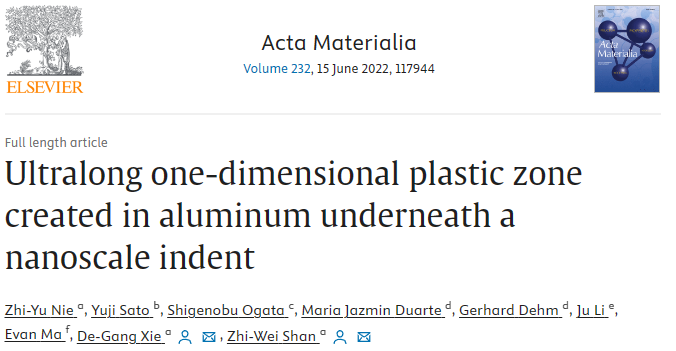
Nanoindentation on crystalline materials is generally believed to generate a three-dimensional plastic zone, which has a semi-spherical shape with a diameter no larger than a few times the indentation depth. Here, by observing nanoindentation on aluminum in situ inside a transmission electron microscope, we demonstrate that three-dimensional plasticity dominated by regular dislocations triumph as the contact size upon yielding increases above ∼100 nm. However, when the contact diameter is less than ∼50 nm, a narrow and long (hereafter referred to as “one dimensional”) plastic zone can be created in front of the tip, as the indenter successively injects prismatic dislocation loops/helices into the crystal. Interestingly, this one-dimensional plastic zone can penetrate up to 150 times the indentation depth, far beyond the prediction given by the Nix-Gao model. Our findings shed new light on understanding the dislocation behavior during nanoscale contact. The experimental method also provides a potentially novel way to interrogate loop-defect interactions, and to create periodic loop arrays at precise positions for the modification of properties (e.g., strengthening).
Link:https://doi.org/10.1016/j.actamat.2022.117944